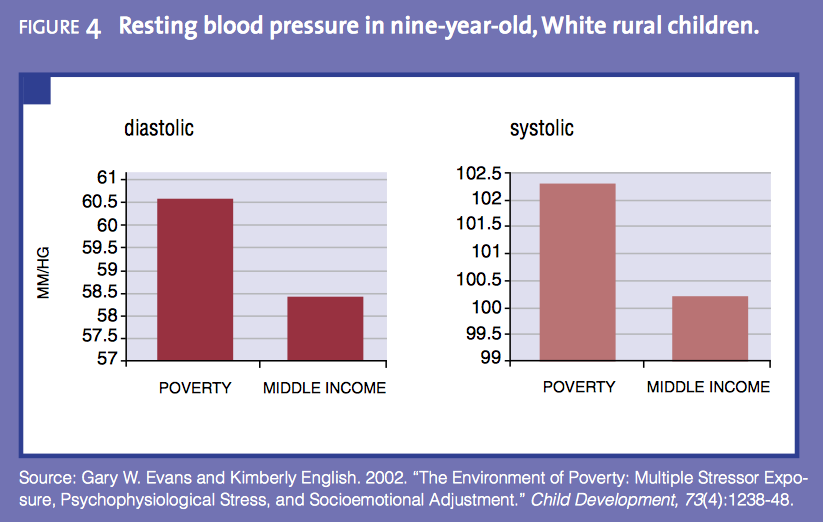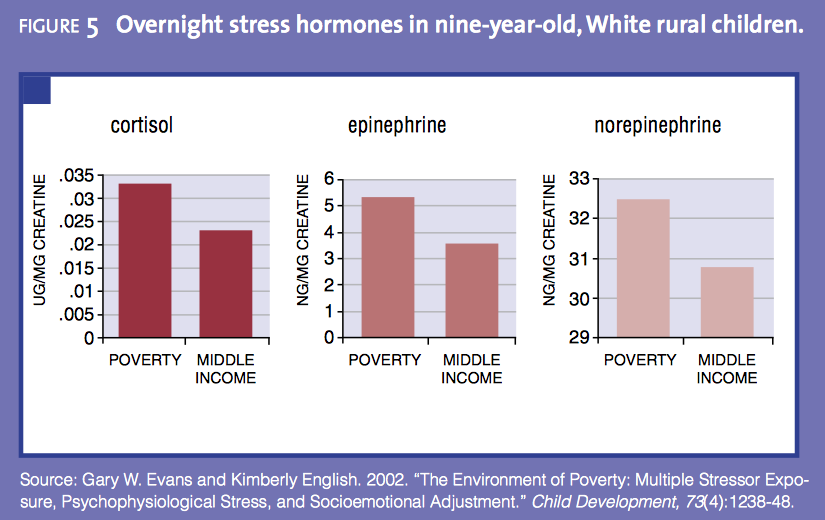Whilst, munching through my tea and toast this morning I came across the screaming headline Wall Street’s Brightest Minds Reveal THE MOST IMPORTANT CHARTS IN THE WORLD. My initial response was I doubt that and upon opening the link I my initial doubts were confirmed. What should have tipped me off was the expression Wall Streets Brightest Minds – a profound contradiction in terms if ever there was one. When you open the link you will get a selection of badly organised, poorly presented bits and pieces that really dont tell you anything about anything. However, I have to admit that amongst this shambles of a presentation there was one chart that caught my eye, so much so that I went to the source documentation to see the original. This was necessary since few things annoy me more than people who simply clip a low resolution graphic into powerpoint.
I have reproduced the two graphics that interested me below. they are from a study called – Stressing out the Poor – Chronic Physiological Stress and the Income Achievement Gapby Gary Evans, Jeanne Brooks-Gunn and Pamela Kato Klebanov
The simple interpretation of these two graphics is that being poor is a physiological as well as psychological stress for children. It is the fact that these graphs relate to children that caught my attention – it can be well understand that poverty is a stressor for adults but its impact upon children is something that cannot be overlooked. The issue is that having a young brain flooded with stress hormones on a daily basis has obvious implications for a range of behavioural, educational and life outcomes. It is sowing the seeds for not only a lifetime of problems but is probably also setting in chain the intergenerational problems that bedevil poorer neighbourhoods.
The author of the study offer a powerful conclusion –
Childhood socioeconomic disadvantage leads to deficits in academic achievement and occupational attainment. It’s long been argued that such deficits arise because poor children are exposed to inadequate cognitive stimulation and to parenting styles that don’t encourage achievement. We don’t dispute the important role of these two variables. But we have outlined here evidence for a new, complementary pathway that links early childhood poverty to high levels of exposure to multiple risks, which in turn elevates chronic toxic stress. This cascade can begin very early in life. Even young babies growing up in low-income neighborhoods already evidence elevated chronic stress. This stress then accounts for a significant portion of the association between poverty and working memory, a critical cognitive skill involved in language and reading acquisition.
The Risk–Stress Model suggests that the poverty–achievement link can be broken by addressing (a) the tendency of poverty to be associated with physical or psychosocial risks (e.g., environmen- tal toxins, family turmoil), (b) the effects of such risks on stress, and (c) the effects of stress on achievement. If this model bears up under further testing, it would be useful to explore which of these pathways is most amenable to intervention.








